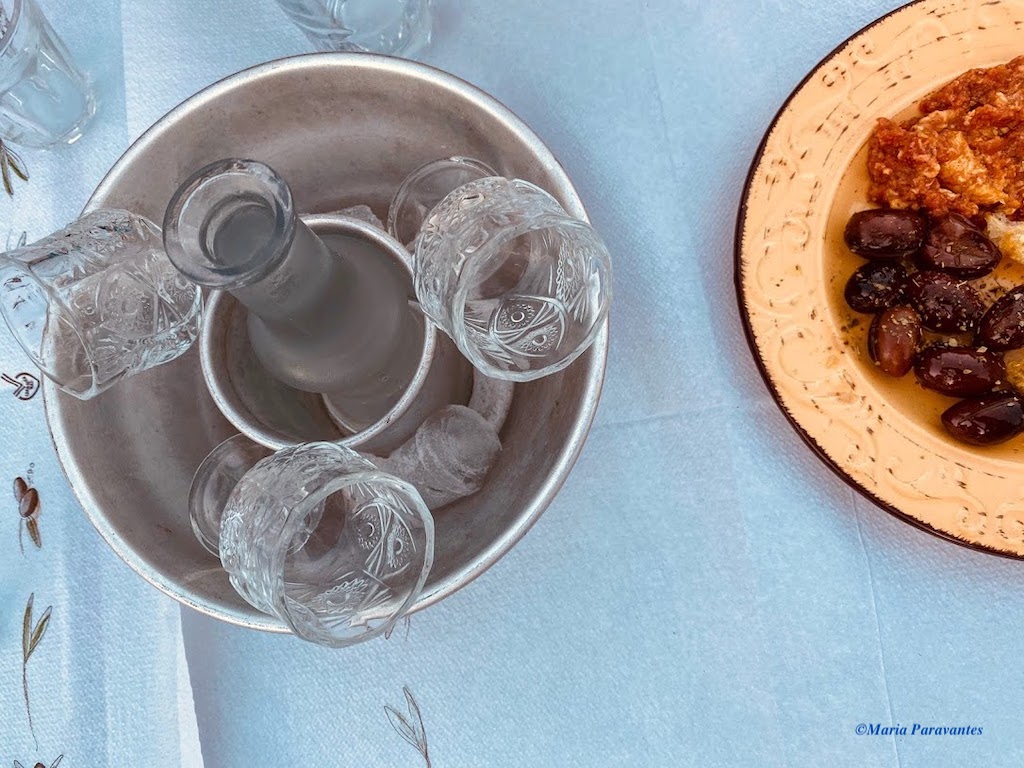
So what is a Greek meze you ask. Well, the word “meze” is derived from the Turkish word “mezze” and it means “bite-sized snack” or “appetizer”. The word is actually borrowed from the Persian “maza“, which means “to taste or relish” and that’s exactly what a perfect Greek meze is all about: enjoyment.
All Mediterranean and Middle Eastern cultures have their own snacks and some are even famous like the tapas of Spain. But what is the difference between a meze and tapas?
The Greek meze is served early in the day at around noon before lunch or late in the evening and originally was a selection of what was always available in the kitchen or easy to make. Let’s not forget, Greece was a poor and war-ravaged country up to the early 1960s.
I remember in the 1970s going to the town square with my grandfather at noon. We would sit at a café on the large Areos Square in Tripoli, Arcadia. I would order a traditional “sokolatina” (chocolate) pastry and he would order an “ouzaki”. Back then, and still at some traditional coffee houses (“kafeneia”) today, a glass of ouzo was always accompanied by a meze – a tiny white plate with the following: a piece of aged graviera cheese, 2-3 olives, one pickled sardine, a meatball (keftes), a piece of cucumber and tomato.
👉🏼 Dream of visiting Greece? Start planning
The Greek Meze and the Ouzeri Experience
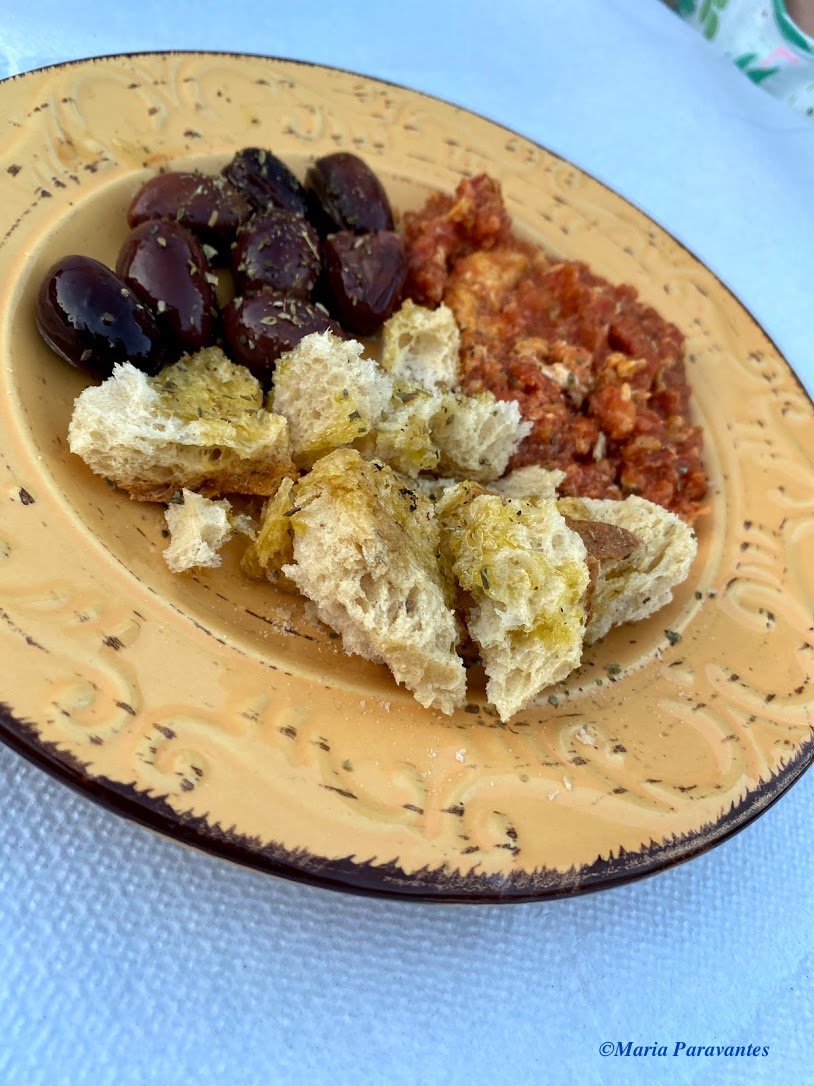
Today this has changed a great deal and you are likely to find a genuine meze only in a far off village somewhere in the Greek mountains or on a remote island.
The difference between a meze and a tapa is that the Spanish appetizer is firstly also served at bars, combines cold and hot fried and fried in batter delicacies and is more often very creative and sophisticated, meant to accompany wine for the most part. It is also meant to be shared among friends who are out to talk instead of eat.
The Greek meze started off as a basic snack to accompany ouzo or raki and this because both drinks are very intoxicating. It too had both cold mostly pickled and fried dishes but was served at coffee houses. Unlike tapas, the meze was made for one person only.
Today, the meze has evolved into a smorgasbord of items and is in itself a main meal and an exciting culinary and social experience. In the mid-1980s the humble one-man’s ouzaki went from a small dish of basics to a platter of savory tidbits or even dozens of intricate plates to be shared among friends and family. And that’s when two new forms of Greek eatery emerged: the “ouzeri” – a mix of taverna and kafeneio and the “mezedopoleio” or a place that serves mezedes or mezedakia (plural for meze).
►How to Drink Ouzo, Raki or Tsipouro
Both the ouzeri and mezedopoleio take the “ouzaki experience” a step further with extensive menus full of unique appetizers from all parts of Greece meant to be eaten slowly over conversation with wine, raki and tsipouro, or ouzo.
How NOT to Eat a Meze
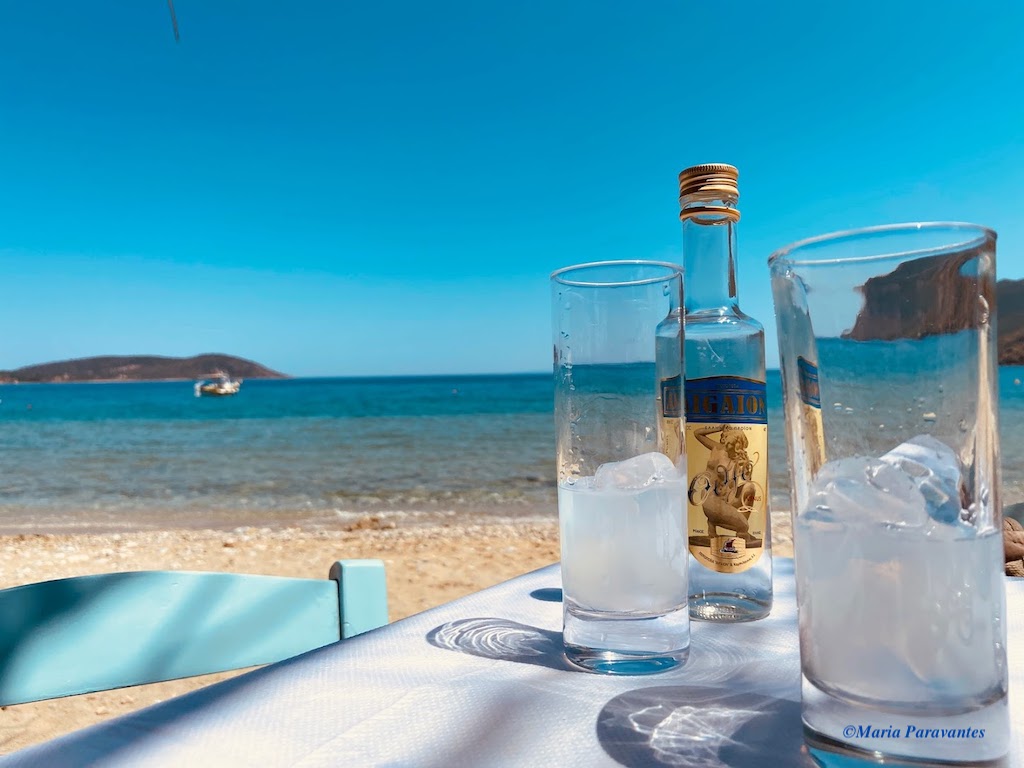
- A meze is meant to be enjoyed over hours: taking a sip of your drink, sitting back, enjoying the carefree moment. Taking a bite. Which means you do not dig in right away.
- A meze can be shared. That’s the whole point. To be able to take some time out of the day, sit with a friend and enjoy some genuine human interaction.
- A meze can also very much be a solo endeavor. Instead of coffee, you order an ouzo-meze at a café and just relish the moment looking out of the window mindlessly.
- A meze is NOT a meal. It’s not supposed to “fill you up”. The idea is to ensure you don’t get tipsy. Just enough to stop the hunger and at the same time offer a boost before lunch.
The Basic Greek Meze Foods
- Keftedes (meatballs)
- Greek Cheese – graviera or kasseri
- Cucumber and tomato
- Pickled sardines or anchovies
- Pickled caper leaves (kaparofylla)
- Pickled artichokes
- Picked Florina peppers – a unique-to-Greece sweet red pepper found in the Macedonia region
- Octopus marinated in vinegar
- Greek olives
- Stuffed grape leaves known as the “dolmadaki”
- Sausage
- Fried calamari
►12+1 Greek Food Products You Must Try
Prepare Your Own Greek Meze in 5 Easy Steps
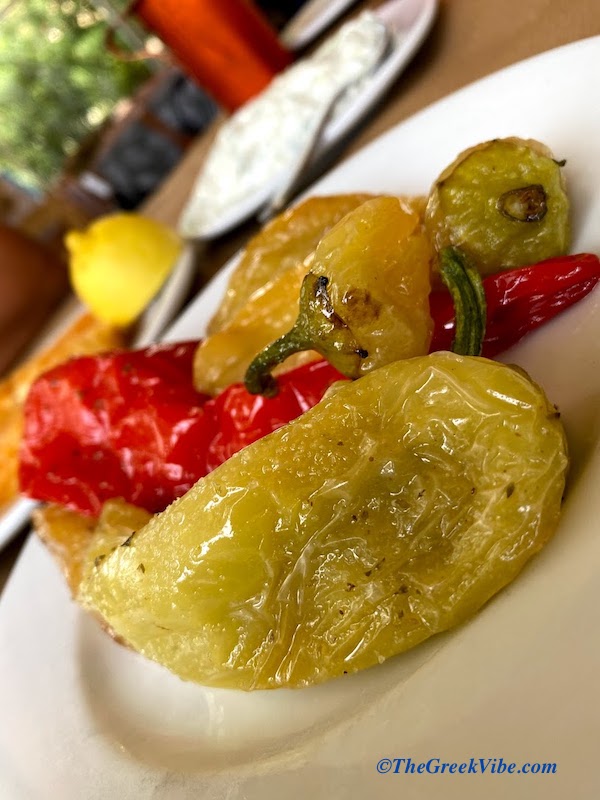
1) Get the Greek music playing. Play this list of songs that take you virtually from the sea to the mountains and from the city to the countryside. Turn the volume up and head to the kitchen.
2) Find a small table, lay your favorite summery tablecloth or this one for fun , small plates and forks, and shot glasses for ouzo or wine glasses.
3) Select four or five items from the list above – no more. Take out small plates and fill with:
–a handful of Kalamata olives or Cypriot spicy “tsakistes” (cracked) olives
– a few fried Greek meatballs (keftedes)
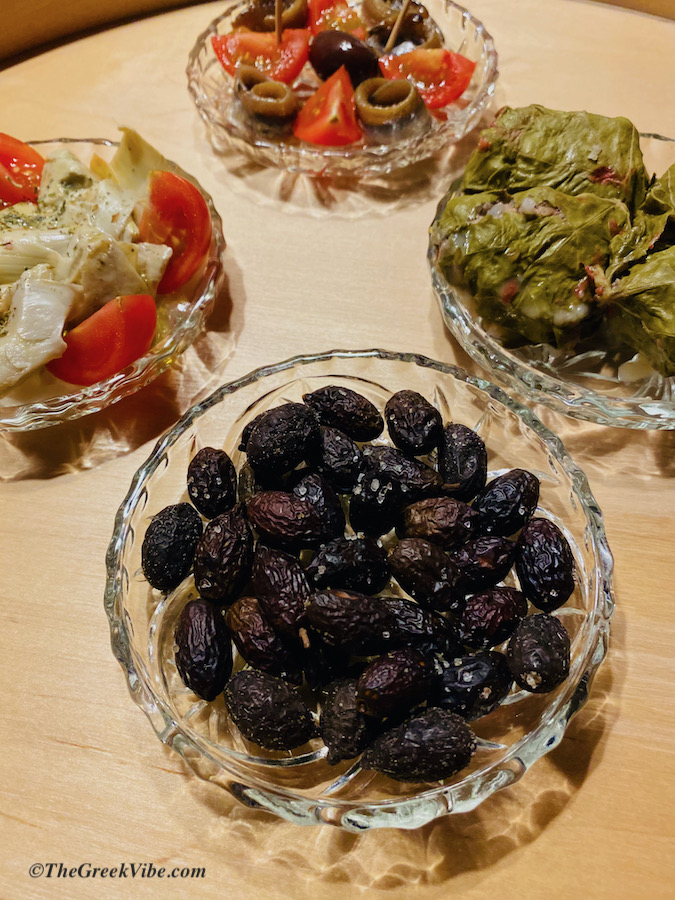
– some Cretan graviera cheese sliced in small rectangular pieces. You can chose the softer kasseri too
– ready-made dolmades usually avaialable at delis. These are my favorites
– sliced cucumber, add sea salt and some vinegar
– sliced tomato, add sea salt and oregano
Remember! Go small
4) Serve with ouzo, tsipouro or raki in shot glasses. Don’t forget the ice: Drinking in Greece is a very slow process, so make sure to drink ‘mindfully’ – which means chatting a bit, letting go of any unwanted thoughts, and… languidly, as if time is of no matter or meaning, enjoy life right this moment.
5) And don’t forget to toast:“Stin Ygeia Mas” (Health to All) – even if you’re alone: Here’s to you!
In the words of Greek philosopher Socrates:
“The secret of happiness is not found in seeking more, but in developing the capacity to enjoy less.
Socrates
👉🏼 Find the best hotel deals for you
♫I end today’s post with one of my all-time favorite singers: Haroula Alexiou in “Ouzo Otan Pieis” about the effects of drinking ouzo… you feel like a king, you own the world!
Enjoy!
Enjoy this Post? Share and Pin it!
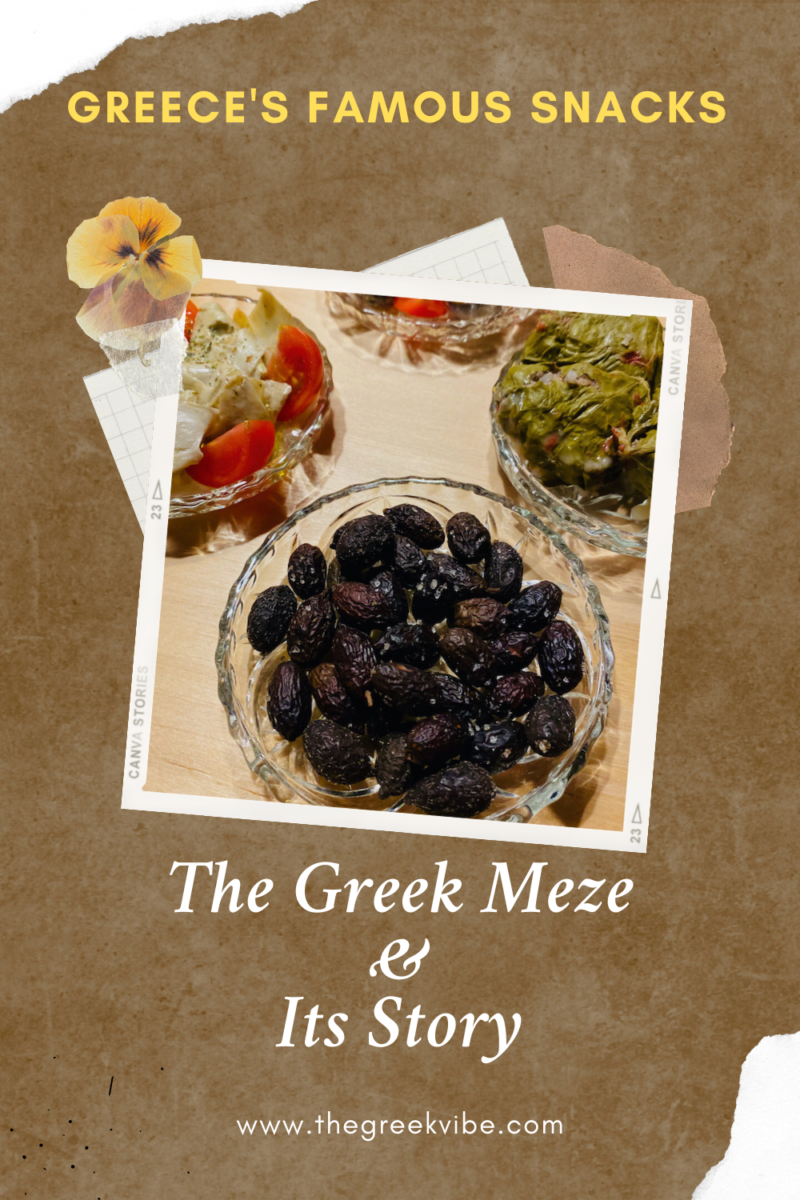




Please walk around all the places people are eating meze and explain all this to them :), I am horrified by the way people wolf them down including myself without a real thought to how to get maximum pleasure from these experiences. I live in a culture where food is eaten as fast as possible and I struggle to make others understand my Greek approach to relaxing with food and drink and enjoying the whole experience instead of quick fuel on the go for the body which then results in bad diet and indigestion. The Brits and Americans could sure use some lessons from the Greeks. The Spaniards, Italians and the French also seem to have this excellent eating culture and it is perhaps one of the reasons they produce such good food, if one is taking the time to taste the food, one will want it to taste good! I feel so relaxed even when you just describe the process never mind when I am actually there.
Wonderful points dear Anita. Thank you and when you are in Athens let’s meet for a meze!
Socrates was right then and even applies today
Sadly his wisdom is lost on our so called modern world
Yes, Aaron. I agree that we could learn a great deal and be better people and societies has we followed Socrates’ teachings. But one thing is for sure, his philosophy has survived thousands of years: there must be a reason.